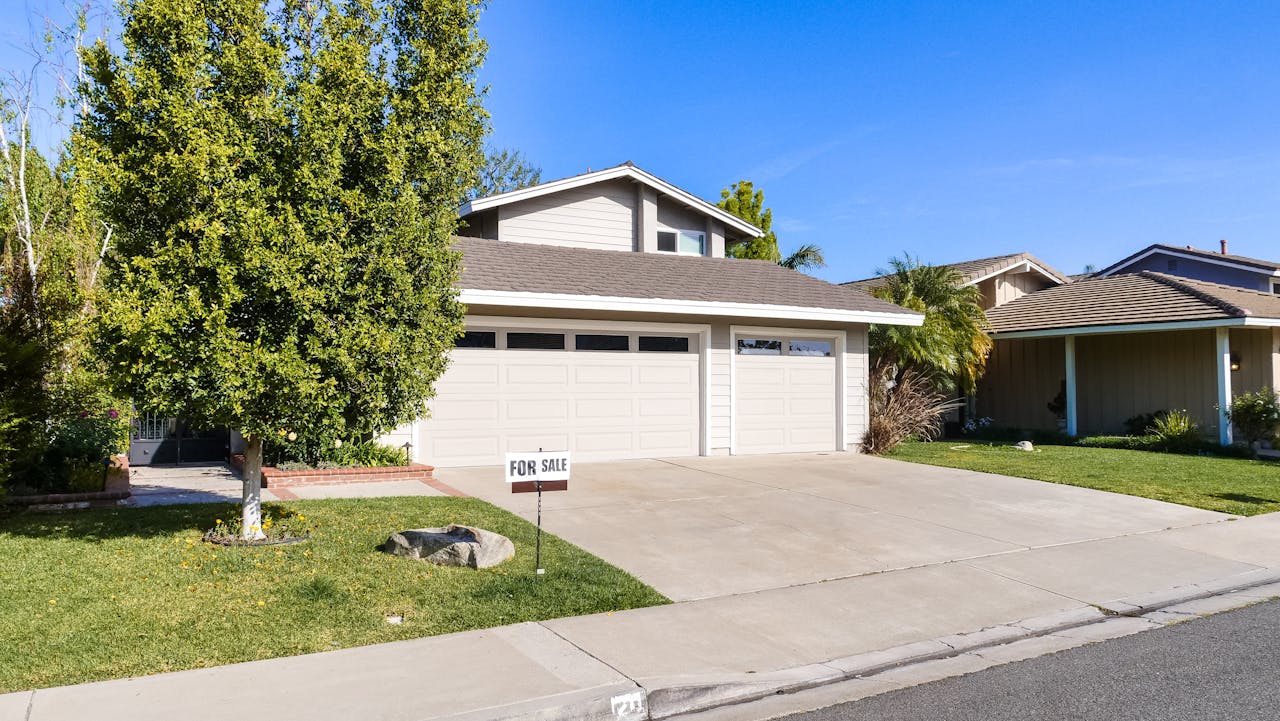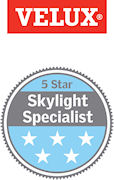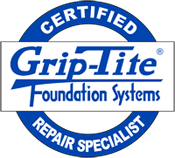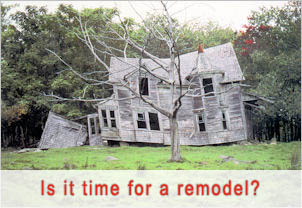
Key Takeaways
- For maximum rental value, design your ADUs with open layouts, plenty of natural light, and built-ins to make your spaces both functional and attractive.
- Flexible floor plans, soundproofing, and separate living zones enable you to appeal to a diverse set of tenants and lifestyles, expanding your rental market.
- Spending a bit more on long-lasting, contemporary, and environmentally-conscious finishes not only raises the value of your property, but resonates with renters globally who value quality—and sustainability.
- Things like high-speed internet, in-unit laundry, a full kitchen, and smart home features will help you charge premium rent.
- Yard space, a private entrance, and energy-efficient upgrades such as LED lights and efficient appliances all increase tenant happiness and help you secure long-term renters.
- By keeping an eye out for local ordinances, finding that sweet spot between cost and quality, and marketing the advantages of tiny living, you can help safeguard your ADU’s value against shifting markets.
To design an ADU for maximum rental value, you need to focus on smart layout choices, cost-saving build methods, and features that renters want. Choosing a floor plan with open space and lots of light makes your ADU widely appealing. A tiny kitchen with energy-saving appliances, in-unit laundry, and good storage makes your unit shine. Renters like private outdoor space and robust internet. Just don’t forget to design something that fits local rules and use quality but simple finishes for low upkeep. You extract more value by maintaining the style clean and the rooms effortless to use. Below, discover essential steps, design advice, and what not to do when designing your ADU.
Foundational ADU Design Principles
A great accessory dwelling unit (ADU) design creates value with clever space utilization, comfort, and flexibility, appealing to potential renters while respecting open plans and maximizing natural light.
1. Layout
An adaptable floor plan equals more rental possibilities and increased rental appeal. You desire a space that can transition between a couple, a single professional, or a young family. Introduce distinct spaces for living, sleeping, and working. Separate rooms for each essential daily need enhance comfort and privacy, assisting you in appealing to long-term tenants or possibly even vacationers.
Functional circulation counts. Primary thoroughfares, a minimum of 0.9 meters wide, allow you to navigate through the kitchen, living room, and bedroom without brushing against objects. A flush entry—no more than ½ inch—assists with bags, strollers, or mobility aids. Utilize universal design so that every age and ability feels at home. Consider soundproofing within common walls or in between sleeping and living areas. It’s a minor action that results in more joyful, peaceful renters and reduced turnover.
2. Light
Sunlight attracts people, making it essential for accessory dwelling units (ADUs) to have plenty of natural light. Positioning big windows and skylights can whisk sunlight deep into the rental unit all day long. Light tones on walls and reflective surfaces help create the illusion of a larger space by bouncing light around. If possible, direct window openings toward prime views, but shift them laterally or use frosting for privacy—particularly in tight-knit neighborhoods where rental options may be limited.
Layered lighting is also crucial for a positive rental experience. Dimmable fixtures allow potential tenants to create ambiance, while thoughtful lighting design minimizes glare and enhances comfort, especially for older renters after dark.
3. Storage
Storage is a prime tenant concern. Multifunctional furniture—sofas with drawers, fold-away beds, and benches with cubbies—compresses storage into small spaces. Oversized closets and cabinets that are effortless to access, not buried in awkward corners. Take advantage of the height of the room for additional shelves or cabinets — this keeps the floor surface open and the space relaxed.
Some renters require exterior storage, such as a mini bike shed or space to keep tools or hobby equipment. Provide alternatives that don’t encroach on the living space. Well-conceived space equals less clutter and happier tenants.
4. Finishes
Timeless finishes stand up and reduce maintenance. Select stone or ceramic counters, durable laminates for flooring, and wipe-clean paints for the walls. Contemporary, clean lines and neutral tones keep rooms feeling clean and cater to a wide preferences. One consistent design thread—same trim, fixtures, and palettes—pulls the ADU together.
Slip in some green options, such as low-flow taps or recycled flooring, for the eco-conscious tenant. This makes your ADU special in a sea of sameness.
What Amenities Attract Renters?
Knowing what amenities to emphasize in your accessory dwelling units will differentiate your rental ADU and attract more high-quality potential tenants. These features add value, comfort, and often determine the rental income potential.
Private Entry
A private entrance is a necessity for renters seeking independence. This setup allows your tenant to enter and exit without passing through your primary residence, a crucial component to everyone’s peace of mind. A walkway or a gate or a little landscaping—shrubs or pavers—leads guests to their door and makes the place look more inviting.
Good lighting here is important as well. Consider motion-sensor or pathway lights to maintain a safe and easy-to-find entrance at night. Robust locks and direct sightlines assist renters in feeling secure. If the primary residence is nearby, incorporate some soundproofing around the entry to minimize noise and impart a more private atmosphere to the space.
Outdoor Space
Entry to outdoor living ranks high on many renters’ wish lists, especially when considering accessory dwelling units (ADUs) as rental options. A small patio, balcony, or garden can make your rental ADU much more appealing than one without any fresh-air options. By adding a few chairs or a bench, and perhaps a fire pit if you have the room and zoning laws allow, these straightforward additions assist potential tenants in imagining themselves unwinding or entertaining friends outdoors.
Your outdoor space should be accessible from the interior of the ADU so that renters don’t need to traipse through your main house. Keep landscaping easy—low maintenance or hardscape—so potential renters won’t be spending their weekends trimming and watering. Minimal maintenance equals minimal work for you, as well.
In-Unit Laundry
No, tenants want in-unit laundry machines. This is time and hassle-saving compared to shared or off-site laundry. Select ENERGY STAR appliances to impress eco-conscious renters eager to reduce utility bills.
Set aside a niche or closet for the washer/dryer. Utilize shelves or cabinets close by to house laundry soap and baskets, so the space remains tidy and accessible. A tiny yet serviceable laundry situation can be a clincher.
Full Kitchen
A fully-equipped kitchen tells your ADU is more than just a simple rental. Have a stove/oven, refrigerator, and microwave – these things are par for the course for your long-term renters. Design your layout so renters have adequate counter space to make their meals, and incorporate ample cabinets for storage.
Choose contemporary finishes and fixtures. Stainless or easy-clean surfaces look nice and last. Long-lasting materials translate to fewer repairs for you down the road. A stylish kitchen attracts renters who plan to dine in and makes your listing pop.
Smart And Sustainable Features
Outfitting an accessory dwelling unit (ADU) with smart and sustainable features can distinguish your property in the rental market. The right combination of smart features, sustainability, and efficient design enhances your rental income potential, making your ADU more desirable, livable, and affordable to a broader pool of potential tenants. These decisions are about more than just being trendy—they’re intelligent strategies that improve value, encourage comfort, and reduce operating expenses for you and your tenants.
Smart Home
Smart locks provide tenants with secure and convenient access while allowing you to control access remotely. They eliminate crucial friction and provide an element of confidence for each party.
Smart appliances, from ovens and fridges with app controls to dishwashers that learn usage patterns, make daily life easier for your renters. Tenants can kick off laundry from their phone or check if they left the stove on after they’ve left.
Smart home automation lets tenants adjust temperature, lighting, or even blinds from their device. These systems are great for shared or shifting schedules. Smart thermostats give renters control and track energy use, which saves money in the long run. In your listings, flaunt these upgrades to attract tech-savvy renters from around the globe.
Energy Efficiency
Well-insulated and high-performance windows retain heat in winter and keep it out in summer, reducing both heating and cooling expenses. Southern exposure with well-sized overhangs can increase solar gain in the cold months and block heat during the hot months, reducing energy consumption by as much as 30 percent over average construction.
LED lighting consumes less energy and has a longer life span, so you save on maintenance, and your tenants save on bills. Energy-efficient appliances, such as low-consumption washers and induction cooktops, can minimize monthly expenses.
Explain to tenants how to use these features well—like keeping blinds closed during midday heat or setting programmable thermostats—to help them save more. These moves differentiate your ADU in the worldwide rental pool, as eco-living is a high priority for many.
Water Conservation
Low-flow bathroom and kitchen fixtures reduce water consumption without sacrificing convenience. A lot of renters seek out these details as water costs increase and resources decrease.
Landscaping with drought-resistant plants reduces outdoor water requirements. Succulents, native grasses, or gravel beds look smart and function in several climates. Instill renters with easy water-saving behavior, such as taking shorter showers or only washing full loads of laundry, to create a conscientious living environment.
Include water-saving upgrades in your rental listings. A lot of green-minded tenants look for these specifics initially.
Accessibility And Flexibility
Zero-step entries, wheelchair-accessible bathrooms, and counters with adjustable heights ensure your ADU is functional for all, regardless of mobility requirements.
Flexible designs, such as Murphy beds or sliding walls, assist tiny spaces function for more activities per day. Outdoor spaces, whether it’s a patio or balcony, add style and provide renters with additional space to spread out.
Quick construction with prefab components reduces waste by 30–50% and completes up to 60% sooner, benefiting both the environment and your expenses.
The Psychology Of Small Spaces
Small living spaces, particularly accessory dwelling units, can provide tangible advantages — to you as a landlord, and to your tenants. Reduced maintenance means you have to invest less time and money in fixing things and cleaning. Smaller homes typically consume less energy as well, so those monthly costs tend to remain lower. These aspects resonate with tenants looking to save money, reduce waste, or simply spend less time doing chores. By making your ADU easy to clean and efficient to run, you’re exposing it to a larger pool of potential renters seeking these benefits.
Breezy, open rooms always attract prospective tenants, even if there’s not much square footage. The trick is employing design techniques that fool the eye and maximize every inch of space. For instance, opt for low-slung furniture. Low sofas, unadorned beds, and narrow tables allow more light to travel across the room. They reduce visual clutter, making rooms seem larger than life. Walls eat up space and break up the flow, which is why open floor plans work so well in small ADUs. When you live, dine, and work in one space, your renters can wander around organically. Multi-purpose spaces are key here: maybe a fold-out desk for work, or a Murphy bed that tucks away during the day.
Vertical storage is your best friend in a small ADU. Tall shelves or cabinets keep things off the floor, opening up space to walk and simplifying tidying up. Hooks, racks, and wall-mounted units keep clutter at bay. When you design small spaces with storage in mind, tenants can pack more in without feeling cramped. This design choice not only enhances the living experience but also aligns with the growing trend of maximizing rental potential in accessory dwelling units.
Color is more than style — it’s the mood of a space. Light colors—such as light grey, beige, or dusty blue—reflect additional light and feel soothing. They open up rooms and help renters breathe easy. If you’re looking to inject some energy, bold accents—like a mustard throw or a navy chair—deliver focus and pop without shutting down the space. Patterns and textures make small rooms come alive. For instance, a statement rug or textured wall behind a sofa can create depth and inject intrigue, transforming a nondescript space into a feature that appeals to potential tenants.
Lighting is a major factor for both mood and function. Statement fixtures— a pendant, an artistic wall lamp — pull the eye upward, adding both height and style. Good natural light is key, but in smaller or shaded rooms, layer floor lamps or sconces to make the space feel warm and lived in. Top off the space with smart home devices, like thermostats or lighting controls, for comfort and easy living. Tenants love this tech for its convenience and energy savings, which can also enhance the overall rental experience.
Privacy is important, even in a small room. Use natural barriers–thick shrubs, stone paths, or a row of potted plants–to separate the ADU from the main home or the street. This fosters a feeling of retreat and makes the unit seem like its own separate space. Indoors, employ sliding doors or curtains to carve out zones without blocking light. Such features can significantly improve tenant satisfaction and make your rental property more appealing.
Last, let tenants feel like they can have the space their own. Removable wall art, flexible shelving, or easy paint options allow them to bring in some personality. When renters feel like they can mold their home, they remain longer and care more for the space, ultimately enhancing the rental income potential for property owners.

Navigating Building Regulations
If you’re designing an accessory dwelling unit (ADU) for rental, it’s crucial to navigate a complex set of regulations. Each area sets its own rules, meaning what applies in one city may differ in another. Start by examining local zoning laws, as these dictate whether your lot permits an ADU, its size, proximity to property lines, and height restrictions. Some areas may even prohibit ADUs in specific neighborhoods or impose strict restrictions on parking and access. Missing these regulations could result in wasted time and money on plans that never receive approval.
Building codes are equally important as zoning laws. These codes establish baseline requirements concerning safety, energy consumption, and the overall functionality of your rental ADU. For example, many areas follow Title 24, which mandates compliance with regulations regarding heating, cooling, insulation, and the amount of natural light entering through windows. Additionally, codes cover essentials such as fire exits, smoke alarms, and safe wiring. While these may seem straightforward, they frequently change as cities update regulations to promote safer and more accessible residential units. Overlooking or misinterpreting a code can lead to costly rebuilds, disrupting your timeline and budget.
Be aware that ordinances can change rapidly, especially in regions with fluctuating housing demand. A regulation permitting you to rent your ADU short-term today may be banned tomorrow. Stay informed about updates in your city or region, particularly if you plan to rent your unit soon after construction. In some cases, regulations might require you to live in the main house if you intend to lease out the ADU. Furthermore, new taxes or fees on short-term rentals could be imposed, and failing to keep up with these changes can result in lost rental income or legal complications.
If you’re at a loss, contact some local housing authorities or building officials. They can demystify what’s required for your location and address challenging issues. Bring ’em your plans, sketches, or even just your lot’s address. They can identify zoning issues or highlight for you which codes are most relevant to your project. This step saves you headaches down the line when you present your plans for approval.
Constructing an ADU and getting it ready for rent is not a quick process. A garage conversion might take six months or more, while ground-up construction could span a year. Costs can range from $120,000 to $400,000, influenced by your design choices and local regulations. Start early, verify every regulation, and consult with experts who understand the local rental process. By planning with these rules in mind, you can save time, money, and stress in your journey to create a successful rental ADU.
Balancing Cost And Quality
Striking the balance between cost and quality is the heart of any successful accessory dwelling unit design project. When you’re trying to maximize rental income potential, your materials selections, budgets, and project planning can make or break your results. The decisions you make today will influence not only your ADU’s worth to renters but also the returns you realize as an owner over time.
Begin with the materials and finishes. Consider more than just the sticker price and instead reflect on how the material will hold up. For instance, a laminate floor is going to cost less than tile or engineered wood, but it’s going to see wear quickly, particularly in high-traffic areas. If you select tile or a hardy composite, you’ll pay a little more upfront, but you end up with a surface that wears well against potential tenants and cleans up easily. If you’re looking for a more modern aesthetic without the maintenance, quartz outlasts laminate and resists stains for kitchen counters. In the bathroom, ceramic or stone can last decades, but inexpensive vinyl will have to be swapped out after a few years. These decisions are significant both for attractiveness and upkeep expenses. Strong, easy-to-clean finishes bring in good tenants and protect against recurring repair needs, helping to justify higher rents.
Establishing a practical budget begins with definite priorities. Determine what you need to have for the ADU to be desirable and livable — lockable doors, quality insulation, efficient windows, and a usable kitchen and bath. These basic amenities distinguish your ADU in any rental market. You want to invest in things people see and use daily — like quality lighting, generous storage, and soundproof walls. Luxurious upgrades like designer fixtures or custom cabinets, for example, will quickly add to your expenses without doing much for your monthly rent. Prioritize your expenses by importance and be prepared to trim or postpone less essential ones if costs increase. If you do need to cut costs, concentrate on places where less expensive stand-ins won’t damage the ADU’s desirability or longevity.
Good project management is the answer. That is, scheduling each phase, monitoring expenses, and ensuring the timely delivery of supplies. Wasted money, wasted time, or wasted labor drives up costs and drives down profits. A well-controlled build keeps you on budget and on time. For instance, bulk purchasing or local sourcing can reduce shipping fees. By sleeping to schedule work around downtime, your rental unit is available for renters earlier, accelerating your ROI.
Track your rental market closely. Rental demand, average rates, and tenant expectations can shift quickly. Keep tabs on what other ADUs or small apartments nearby are providing. Use this information to either tailor your price or add differentiating features. If you notice a trend toward in-unit laundry or smart home tech, sprinkle these in if you can afford it. This keeps you competitive and nets you premium tenants.
Conclusion
Smart ADU design sets you on a solid footing in the rental landscape. Utilize clever layouts. Select hardy, washable floors. Flood the place with daylight — big windows. Incorporate storage in places you might overlook, such as under stairs or within walls. Renters dig quick wifi, a laundry room, and a great patio. Solar panels and low-flow taps are money savers, and tenants pay attention. Adhere to local regulations to avoid hassles. Invest in things that endure, not Band-Aids. Consider what renters desire, not merely your personal preferences. To maximize your rental value, apply these tips to your design. Need more? See our blog for new inspiration and field reports.
Frequently Asked Questions
1. What Is The Best Layout For An ADU To Attract Renters?
Open floor plans are the best for accessory dwelling units, making compact spaces feel huge. If possible, add a separate bedroom to enhance rental options. Prioritize natural light and smart storage to create a cozy living space that appeals to potential tenants.
2. Which Amenities Increase ADU Rental Value The Most?
In-unit laundry, modern kitchens, and private outdoor spaces are winners in the rental market. High-speed internet and AC are prized by prospective tenants, making your rental property noteworthy and commanding premium rent.
3. How Can You Make An Adu Feel Spacious?
Employ light colors, large windows, and few partitions in your accessory dwelling unit (ADU). Built-in storage and multi-tasking furniture enhance the rental experience, making your rental ADU feel spacious and inviting.
4. What Sustainable Features Should You Add To Your ADU?
Incorporating energy-efficient appliances, LED lighting, and good insulation into your accessory dwelling unit can minimize utility expenses and enhance the rental experience, appealing to green-minded tenants and boosting rental income potential.
5. Are There Specific Regulations To Consider When Designing An ADU?
Yes, you should adhere to local building codes and zoning regulations, particularly those affecting accessory dwelling units. Verify size restrictions, access policies, and parking regulations to ensure compliance and avoid costly mistakes!
6. How Do You Balance Cost And Quality In ADU Design?
Go with durable, mid-range materials for the ‘walk-all-over’ areas. Spend on quality where it counts, in kitchens and bathrooms, ensuring your accessory dwelling unit is desirable to potential tenants and maximizing rental income potential.
7. Why Is Natural Light Important In ADU Design?
Natural light makes accessory dwelling units (ADUs) seem larger and airier, enhancing tenant satisfaction and comfort. Big windows and glass doors maximize light, making your rental ADU more attractive, thereby increasing its rental income potential.
Your Dream Home Addition Built By Mares & Dow Construction & Skylights – Let’s Create The Extra Space You’ve Been Dreaming Of
Expand your home’s potential and enhance everyday living with a custom home addition from Mares & Dow Construction & Skylights. With over 40 years of construction experience, we specialize in high-quality additions that seamlessly integrate with your existing structure and lifestyle needs.
Whether you’re planning a new primary suite, second-story expansion, or an in-law unit, we tailor each addition to match your vision, your home’s architecture, and your long-term goals.
Key benefits of our general home addition services include:
• Adding valuable square footage for growing families or multi-use living
• Increasing your property’s value with expert design and construction
• Creating energy-efficient, modern living spaces tailored to your needs
Proudly serving Contra Costa County—including Alamo, Danville, Orinda, Martinez, and San Ramon—Mares & Dow Construction & Skylights is your trusted partner for functional, beautiful, and lasting home additions.
Contact Mares & Dow Construction & Skylights today for a free, no-obligation quote, and let’s build your ideal home addition together.
Disclaimer
The materials available on this website are for informational and educational purposes only and are not intended to provide construction, legal, or professional advice. You should consult with a qualified general contractor or industry professional for advice concerning any specific construction project, remodeling plan, or structural concern. Do not act or refrain from acting based on any content included on this site without seeking appropriate professional guidance. The information presented on this website may not reflect the most current building codes, regulations, or industry best practices. No action should be taken in reliance on the information on this website. We disclaim all liability for actions taken or not taken based on any or all of the contents of this site to the fullest extent permitted by law.





 based on
based on 

